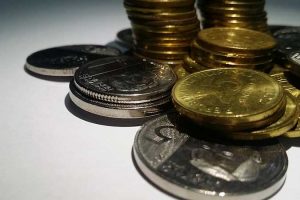
Term deposit yields end mixed as PHL inflation picks up in May
YIELDS on the central bank’s term deposit facility (TDF) ended mixed on Wednesday following the release of data showing Philippine headline inflation picked up for a fourth straight month in May.
The term deposits of the Bangko Sentral ng Pilipinas (BSP) fetched bids amounting to P293.309 billion on Wednesday, higher than P290 billion on the auction block and P226.658 billion in tenders for a P210-billion offer seen a week ago.
Broken down, tenders for the eight-day papers reached P139.331 billion, slightly below the P140 billion auctioned off by the central bank but above the P110.47 billion in bids for a P100-billion offering of seven-day deposits seen the previous week.
Banks asked for yields ranging from 6.5% to 6.55%, wider than the 6.51% to 6.5412% band seen a week ago. This caused the average rate of the one-week deposits to inch up by 0.09 basis point (bp) to 6.5345% from 6.5336% a week earlier.
The one-week tenor was adjusted from the regular seven-day maturity as its settlement date was moved to June 13 due to the Independence Day holiday on June 12, the BSP said.
Meanwhile, bids for the 14-day term deposits amounted to P153.978 billion this week, higher than the P150-billion offering and P116.188 billion in tenders for the P110 billion worth of 15-day papers offered on May 29.
Accepted rates for the 14-day deposits were from 6.55% to 6.5895%, a tad wider lower than the 6.56% to 6.59% margin seen a week ago. With this, the average rate for the two-week tenor remained unchanged at 6.5761%.
The BSP has not auctioned off 28-day term deposits for more than three years to give way to its weekly offerings of securities with the same tenor.
The term deposits and the 28-day bills are used by the BSP to mop up excess liquidity in the financial system and to better guide market rates.
TDF yields were mixed following the release of May inflation data, Rizal Commercial Banking Corp. Chief Economist Michael L. Ricafort said in a Viber message.
Headline inflation quickened for a fourth straight month to 3.9% in May from 3.8% in April, the Philippine Statistics Authority reported on Wednesday.
Still, this was slower than the 6.1% print in the same month a year ago. The May consumer price index (CPI) was also within the BSP’s 3.7-4.5% forecast for the month and was a tad lower than the 4% median estimate in a BusinessWorld poll of 16 analysts conducted last week.
It also marked the sixth straight month that inflation settled within the central bank’s 2-4% annual target.
For the first five months, the CPI averaged 3.5%, within the BSP’s target range for the year.
The central bank expects inflation to average 3.5% this year.
“The inflation outturn is consistent with the BSP expectations that inflation could temporarily accelerate above the target range over the near term due to adverse weather conditions on domestic agricultural output and positive base effects. Nonetheless, the BSP expects average inflation to return to the target range for full-year 2024 and 2025,” the central bank said in a separate statement on Wednesday.
“The risks to the inflation outlook continue to lean toward the upside. Possible further price pressures are linked mainly to higher transport charges, elevated food prices, higher electricity rates, and increase in global oil prices,” it added. “Looking ahead, the Monetary Board will consider the latest inflation outturn in its upcoming monetary policy meeting on June 27.”
Recent signals from BSP Governor Eli M. Remolona, Jr. that the Monetary Board could begin cutting rates before the US Federal Reserve also affected term deposit rates on Wednesday, Mr. Ricafort added.
Mr. Remolona earlier said the BSP could kick off its easing cycle with a 25-bp rate cut as early as the Monetary Board’s Aug. 15 meeting and could slash rates once or twice in the second semester as they are now “less hawkish than before.”
The Monetary Board last month kept its key rate steady at a 17-year high of 6.5%. The central bank raised borrowing costs by 450 bps from May 2022 to October 2023 to tame inflation. — Luisa Maria Jacinta C. Jocson



